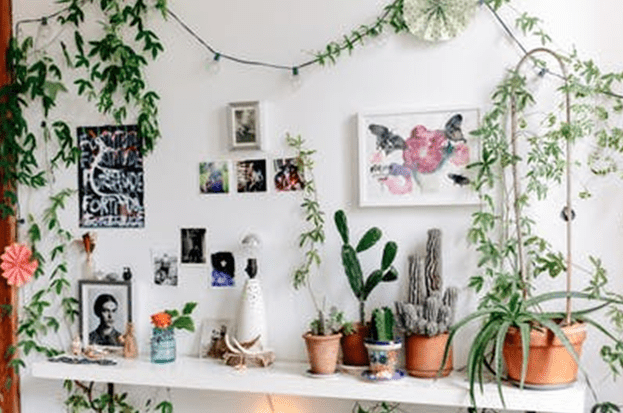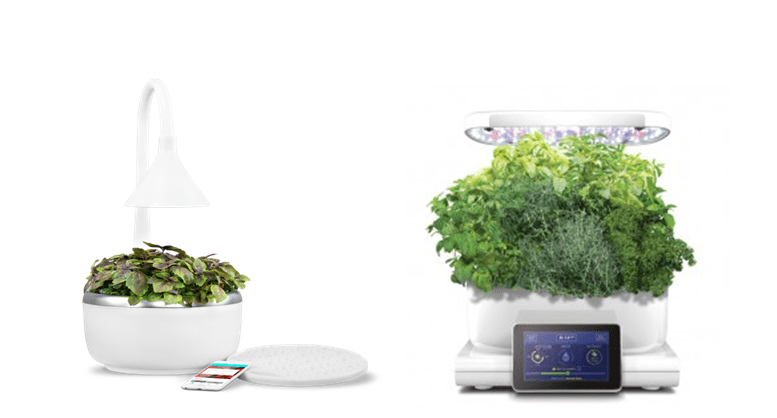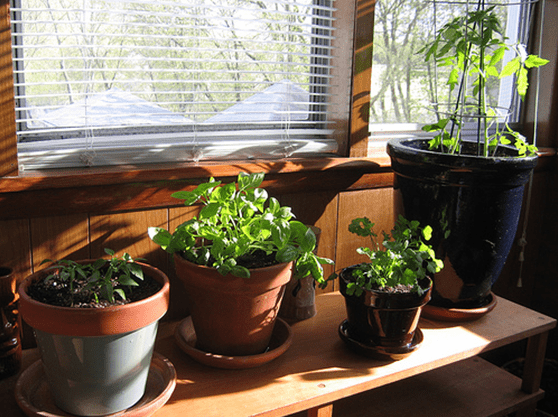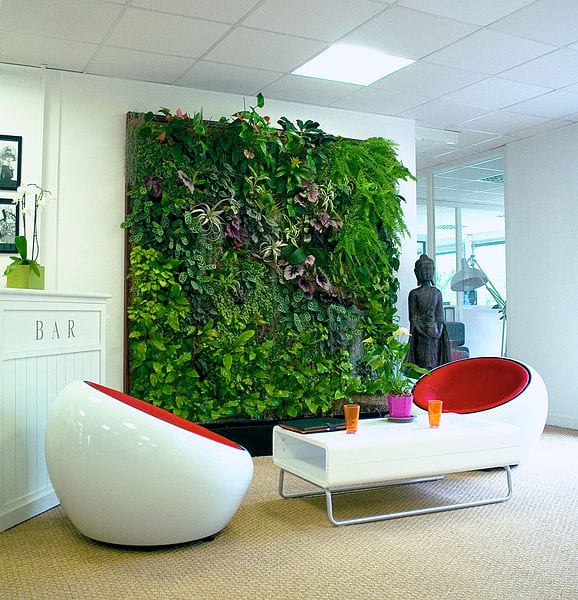Maintaining a garden is no joke, and starting one is impossible without the right foundational materials. If you want to start a basic garden, you’ll need the following: soil, water, seeds, and sunlight.
Sunlight being the requirement that, in the past, relegated gardening as an almost exclusively outdoor activity.

But not anymore! Technological advancements have made it possible to bring all of your gardening essentials inside.
And while traditional outdoor gardening may require too much space, take a toll on your body, and overexpose you to the elements, an indoor garden can be a smaller, easier, and more comfortable alternative.
Great, right?! But where do you get started? We’ve got you covered. We’ve compiled below the ultimate beginner’s guide to indoor gardening, including:
- Automatic/Wi-Fi-based growing units, fit for people who don’t want to get their hands dirty
- Basics for beginner gardeners
- General tips for plant care that everyone should know
With the below info, as well as maybe a few trials and errors, you’ll be well on your way to adding that botanical touch to your home.
For Minimal Work and Fast and Maximum Output, Invest in These:
- Prefilled pods that have dirt and seeds
- Self-watering containers
- LED lights/lamps with timers
If the type of plant doesn’t really matter to you, then starting with a countertop gardening system may work well on your first try. This type of system usually involves the following: placing the pods on the container, filling them with water, and then turning on the LED lights.
The lights operate with an automatic on-off cycle, providing the appropriate amount of exposure for the particular plant you choose in the settings. The latest models for countertop gardening systems are the SproutsIO and MiracleGro AeroGarden Bounty Elite, both available on Amazon.
To help you visualize, here’s how they look:

Preparing the Basics
Alternatively, if you want to feel a little more hands-on with your leafy indoor project, then manually going through this guide will help you get started.
Prepare your growing zone – think of space first.
Your indoor garden can either be small or considerable in size – any amount of space you’re willing to provide for it is alright. If you’re more dedicated, setting up a large bench or table specifically for the plants is recommended. If you want to start for the sake of trying, you can focus on space by the windowsill, where you can grow produce like carrots, tomatoes, and spinach.
Focus on the type of plants or produce you want to grow.
You don’t want your home to turn into a messy jungle. It’s important to think of what your indoor garden might be for – aesthetic or practice?
To complement design, you might want to opt for hanging planters like macramé, water hyssops, or perennial plants. These types are perfect for bare spaces or walls in the house. If you’re a first-timer, consider easy-to-grow plants like pansies, mint, basil, or sunflowers to avoid wasting too much resources.
Select lights for growing.
Proper, adequate lighting is crucial to a plant’s growth. Though there are plants that may not need too much light once they’re grown, most types need adequate lighting to initiate growth and expansion. Don’t forget about the weather too – plants by windowsill are naturally unlikely to develop during winter months.
Even if your house allows in adequate sunlight, you should still invest in grow lights. There are different types in the market – to avoid confusion, use the following run-down as a guide:
Fluorescent lights
This inexpensive type is best for herbs or plants that don’t require too much light. Avoid using this one for budding or flowering plants.
Incandescent lamps
If you want backup lights, opting for an incandescent lamp is okay. Note, however, that this type is not often ideal for indoor gardens.
High intensity discharge (HID) bulbs
Known as the brightest and most efficient lights, HID bulbs also have different types: high pressure sodium, metal halide, low pressure sodium, and mercury vapor. Most people opt for HID bulbs for hydroponics (advanced indoor gardening). The first two types are usually what gardeners only need.
Compact fluorescent systems
An alternative to HID bulbs is a compact fluorescent system. They are smaller and more energy-efficient than older fluorescent lights, making them ideal for most plant types. They produce less heat, enabling them to stay a lot closer to plants.
LED grow lights
This type comes with both red and blue lights, which target and encourage fast chlorophyll absorption. If you’re lacking sunlight, this option is your best bet to accelerate plant or flower growth.
Adjustable LED lamps
This one is best for tabletop plants that don’t have access to natural light.
Agro plant light
The Agro plant light is blue-tinted, specifically designed for indoor gardening. It promotes leaf growth and is usable for recessed and track lighting.
Choose soil types.
There are three basic types of soils fit for a wide variety of plants, and they are as follows:
Premium All-Purpose Soil
If you’re not sure about the type of soil your seed is going to need, then choose a professional-grade, made-for-potting soil.
Perlite Soil
Perlite soil promotes fast airflow and drainage with the use of its volcanic mineral balls. Professional gardeners/planters have sworn by this type as the best choice for both indoor and outdoor plants.
Gardener’s Supply Potting Mix
This type is specially formulated for sub-irrigated planters that are self-watering. It’s also best for plant owners who tend to forget about watering – the mixture wicks and traps moisture in the roots to keep the plants hydrated.
Gather other accessories
You can opt to do the work with your bare hands, or you can buy a complete toolkit for breezy tending. Your hands may not always do a sufficient job at digging or trimming, so it’s always better to buy small spade shovels, snips, pruning shears, and the like.
For watering, buy a watering globe, which is handblown glass that you fill with water and insert into the soil. As the soil becomes dry, it releases oxygen into the watering globe, which in turn release the exact amount of water the plant needs. A watering globe thus decreases your plant’s maintenance needs and buys you time in between watering (refilling the globe with water). For a more hands-on approach, a cute watering can is a good choice, so that it often catches your eye, reminding you to water your pots.
Lastly, you might want to prepare for natural pest outbreaks. Prevent mealy bugs, thrips, and spider mites from ruining your hard work by spraying your plants with an organic neem oil spray.
General Plant Care Tips

Different types of plants or flowers have different planting methods. Since there are too many to condense into one guide, we’ve gathered the most common tips for you.
Tip #1 – Always think of the right plant for your home. To ensure that your efforts grow into fruition, pick a plant that’s compatible with your environmental conditions. Research the types that also work well with your space. If you don’t want your efforts to go to waste on the first try, then choose the ones that are easy to grow and develop.
Tip #2 – Choose the right light and be consistent with it. As detailed above, artificial lights are important to maintain growth for indoor plants. Ask yourself if you’re willing to invest in lights before you start potting.
Tip #3 – Start a watering habit. Almost 90% of growth failures are due to a lack or excess of watering. If you have the tendency to forget most of the time, choose sub-irrigated planters that have indicators reminding you when it’s time to refill. Or, you can choose water reservoirs that can do the work for you.
If you feel impatient or overexcited, remind yourself that plants take time to grow, so it’s best to follow the recommended times for watering.
Tip #4 – Don’t set expectations that are too high. Like any other pursuit or venture, indoor gardening requires patience. Don’t expect your plants to bloom into beautiful decorations overnight. Even some of the best gardeners fail when they try something new, so be sure to ask for help, maximize your available resources, and try again. And enjoy the process! There’s beauty in the growing as well as the growth.


